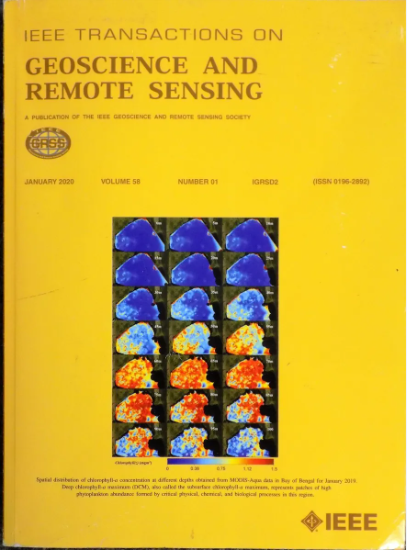DSU-Net:用于二维地震初至选取的动态蛇形 U-Net
IF 7.5
1区 地球科学
Q1 ENGINEERING, ELECTRICAL & ELECTRONIC
IEEE Transactions on Geoscience and Remote Sensing
Pub Date : 2024-09-10
DOI:10.1109/TGRS.2024.3457521
引用次数: 0
摘要
在地震勘探中,确定第一个断裂(FB)对于建立地下速度模型至关重要。为了加快这一过程,人们开发了各种基于深度学习的自动选取技术。最流行的方法是使用语义分割网络对射电集合进行选取,称为二维选取。具体来说,基于分割的方法输入一个集合,并生成一个二元分割图,其中每一列中的最高值代表 FB。然而,目前设计的分割网络很难确保分割的水平连续性。某些区域还存在 FB 跳变,目前的模型很难检测到这种跳变。因此,尽可能多地选取并确保水平连续性非常重要。为解决这一问题,我们提出了一种用于二维地震 FB 挑选的新型网络。我们将计算机视觉中的动态蛇形卷积(DSConv)引入到 U-Net 中,并将新模型称为动态蛇形 U-Net (DSU-Net)。具体来说,我们发展了原有的 DSConv,并提出了一种新颖的 DSConv 模块,它可以提取镜头采集浅层特征中的水平连续纹理。许多实验表明,与其他基于二维分割的模型相比,DSU-Net 具有更高的准确性和鲁棒性,在二维地震现场勘探中达到了最先进的性能(SOTA)。特别是,它能有效检测 FB 跳变,更好地确保 FB 的水平连续性。此外,烧蚀实验和抗噪实验分别验证了 DSConv 模块的优化结构和拾取的鲁棒性。本文章由计算机程序翻译,如有差异,请以英文原文为准。
DSU-Net: Dynamic Snake U-Net for 2-D Seismic First Break Picking
In seismic exploration, identifying the first break (FB) is critical in establishing subsurface velocity models. Various automatic picking techniques based on deep learning have been developed to expedite this procedure. The most popular method involves using semantic segmentation networks to pick on a shot gather known as 2-D picking. Concretely, segmentation-based methods input a gather, and produce a binary segmentation map, where the highest value in each column represents the FB. However, currently designed segmentation networks make it difficult to ensure the horizontal continuity of the segmentation. FB jumps also exist in some areas, and it is challenging for current models to detect such jumps. Therefore, it is important to pick as much as possible and ensure horizontal continuity. To address this issue, we propose a novel network for 2-D seismic FB picking. We introduce the dynamic snake convolution (DSConv) from computer vision into U-Net and refer to the new model as dynamic snake U-Net (DSU-Net). Specifically, we develop the original DSConv and propose a novel DSConv module, which can extract the horizontally continuous texture in the shallow features of the shot gather. Many experiments show that DSU-Net demonstrates higher accuracy and robustness than the other 2-D segmentation-based models, achieving state-of-the-art (SOTA) performance in 2-D seismic field surveys. Particularly, it can effectively detect FB jumps and better ensure the horizontal continuity of FBs. In addition, the ablation experiment and the anti-noise experiment, respectively, verify the optimal structure of the DSConv module and the robustness of the picking.
求助全文
通过发布文献求助,成功后即可免费获取论文全文。
去求助
来源期刊

IEEE Transactions on Geoscience and Remote Sensing
工程技术-地球化学与地球物理
CiteScore
11.50
自引率
28.00%
发文量
1912
审稿时长
4.0 months
期刊介绍:
IEEE Transactions on Geoscience and Remote Sensing (TGRS) is a monthly publication that focuses on the theory, concepts, and techniques of science and engineering as applied to sensing the land, oceans, atmosphere, and space; and the processing, interpretation, and dissemination of this information.
 求助内容:
求助内容: 应助结果提醒方式:
应助结果提醒方式:


